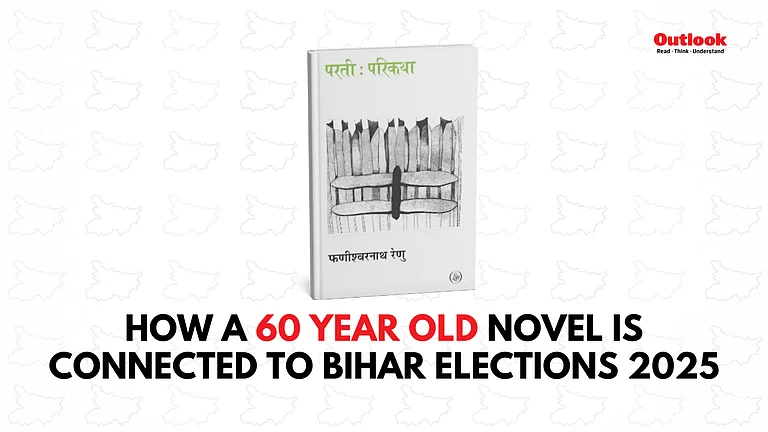The UN Biodiversity Conference of Parties (COP 16) of the Convention on Biological Diversity (CBD) coming up in October 2024 in Colombia may not be as much talked about as the UN Climate Change Conference of Parties (COP 29) to be held in November 2024 in Azerbaijan, but it is no less important. Astrid Schomaker, who took over recently as the executive secretary of the CBD, is determined to advance the implementation of the Kunming-Montreal Global Biodiversity Framework (GBF) adopted by 196 countries at COP 15 in 2022, which has four goals for 2050 and 23 targets for 2030, including mobilising $200 billion per year for biodiversity. In an interview with Rajiv Tikoo on the upcoming COP16, Schomaker says that discussions are expected to focus on several options for new funding mechanisms, including the creation of Global Biodiversity Fund. Edited excerpts:
You have been at the helm of the of the Convention on Biological Diversity (CBD) for a few months now. How helpful is your previous experience from the European Commission?
My entire career in the European Commission, my former employer, was devoted to international relations, including the last 20 years in the area of environment policy. Today we are facing existential challenges, many of which are related to climate change and the degradation of our natural environment, none of which can be solved by countries, however powerful, acting alone. Nor can they be addressed by taking action that focuses only on impacts and not on the drivers of the planetary crisis.
It is an honour to lead the secretariat of the world’s foremost multilateral environmental agreement on biodiversity, working with the Parties to translate their commitments into action. Securing the future of biodiversity means securing the future of humankind.
I assumed this role at a time when the world needs to go from agreement to action on the Kunming-Montreal Global Biodiversity Framework (KMGBF), the historic masterplan adopted two years ago with a view to halting and reversing biodiversity loss through 23 action targets that must be achieved by 2030.
I can count on the CBD secretariat team and on the continued commitment of the Parties to meet the challenges ahead of us to deliver for nature and for people.
How do you intend to accelerate achievement of the Kunming-Montreal Global Biodiversity Framework (KMGBF) targets?
We have just over five years to achieve the 23 targets of the KMGBF, so stepping up action and coming together is absolutely necessary.
Under the KMGBF, the Parties are required to update their national biodiversity strategies and action plans or equivalent instruments, referred to as National Biodiversity Strategies and Action Plans (NBSAPs), and to ensure that these are mainstreamed into the planning and activities of all those sectors that can have an impact on biodiversity.
So, while government-led action is essential, we really need all hands on deck in a whole-of-society approach that includes everyone. We need civil society, indigenous peoples and local communities, business and finance communities, women, youth and academia. We need everyone to contribute, including the media, in raising awareness of the public and holding governments, businesses and the financial sector to account.
And, of course, we need to do more on the means of implementation—financial resources, capacity building, technical and scientific cooperation—and access to and transfer of technology are essential to the full implementation of the KMGBF.
Goal D of the KMGBF includes language on securing the means of implementation and making them accessible to all Parties, especially developing countries, least developed countries, small island developing states and countries with economies in transition.
Even climate action, which gets more traction than biodiversity, is facing financial challenges? What gives you hope that KMGBF’s financial target is achievable?
International biodiversity finance has shown encouraging trends, with increased total development finance over the last decade. However, in order to meet the ambitious targets set in the KMGBF, a considerable increase in funds is necessary.
One very important development was the launching of the Global Biodiversity Framework Fund by the Global Environment Facility in 2023, just a few months after the adoption of the KMGBF. The first beneficiary projects are already underway.
On 28 May 2024 China, UNDP and UNEP launched the Kunming Biodiversity Fund. Another positive trend is the increased integration of biodiversity finance into national and international policy.
The development and implementation of biodiversity metrics and taxonomies and the incorporation of these into ecosystem accounting will be very important.
The private sector also has a key role in achieving the KMGBF targets, but barriers such as the absence of clearly defined transition pathways and a lack of standardised data and metrics hinder the scalability of private biodiversity investments.
Important efforts are underway to develop taxonomies and enhance transparency and accountability in biodiversity investments, with initiatives like the Taskforce on Nature-related Financial Disclosures (TNFD). Incentivising private sector investment through tax breaks, subsidies and blended finance mechanisms can significantly support biodiversity objectives.
Indigenous peoples and local communities make substantial contributions to conservation, both financially and through in-kind support. Increasing evidence shows that providing more direct funding to these groups, as well as to women and youth, can significantly improve biodiversity outcomes by empowering them in their role as key biodiversity stewards. To achieve this, it is important to continue progress by establishing dedicated funding streams and simplifying access to these resources.
As part of the discussion on resource mobilisation at COP 16, the Parties to CBD are going to discuss several options for new funding mechanisms, including the creation of ‘Global Biodiversity Fund’.
Negotiations are also underway for the operationalisation of the multilateral mechanism for benefit-sharing from the use of digital sequence information on genetic resources, including a global fund, agreed at COP 15. This fund could generate additional resources for biodiversity action.
So, there are many positive initiatives and developments which make us hopeful. At the same time, greater action on biodiversity-harmful subsidies is necessary. We call on all governments to speed up the identification, elimination or repurposing of spending that undermines the achievement of the objectives they themselves have set.

What kind of role do you see for private sector here? Can ESG focus on biodiversity be a catalyst?
To halt and reverse biodiversity loss, we need to ensure that businesses take the necessary steps to embed biodiversity in corporate decisions, including investment decisions in innovation and efficiency. KMGBF in its target 15 calls on governments to take legal, administrative or policy measures to encourage and enable businesses and financial institutions to assess, monitor and disclose their risks, impacts and dependencies on biodiversity.
Structured and standardised frameworks that ensure transparency and accountability can prompt businesses and financial institutions to better understand their relationship with, and their impacts on biodiversity. This, in turn, can help them to identify how and where to take action to reduce harmful impacts and increase positive ones.
Reporting and disclosure constitute an important first step in a long journey towards reducing negative impacts on biodiversity as part of a business-led transformative process.
COP 16 will consider a first analysis of the KMGBF-aligned National Biodiversity Strategies and Action Plans as well as National Targets submitted by the Parties to the CBD, which is a good source of information on what governments are doing to create the enabling environment for the required transformation in business processes. This can be supported by peer consultations among the Parties.
The sixth edition of the Business and Biodiversity Forum that will take place during COP 16 will provide opportunities for peer-learning among business leaders and for consultations with policy makers and stakeholders. There is no one-size-fits all formula: business-led solutions aligned with the KMGBF will entail creativity and innovation. There is no shortage of either in boardrooms.
MORE FROM THIS ISSUE

What could be a realistic outcome and output at the upcoming CBD COP?
COP 15, which adopted the KMGBF, charted a course to broad-based transformative action that will ensure that humans live in harmony with nature. COP 16 will provide an opportunity to demonstrate commitment to this endeavor, including by taking stock of implementation two years after COP 15 and what was described as the “Paris moment for nature”.
The Parties will seek agreement on the operationalisation of the multilateral mechanism for sharing of benefits from the use of digital sequence information on genetic resources, including a global fund (established by COP 15).
And, it is crucial to ensure implementation of the KMGBF, COP 16 to advance negotiations on the mobilisation of resources. Resources provided to developing countries must reach $20 billion per year by 2025 and $30 billion per year by 2030.
Another weighty item on the COP 16 agenda is empowering indigenous peoples and local communities to be more involved in the way the CBD works. It is high time they received recognition commensurate with their contributions as custodians of biodiversity and holders of invaluable traditional knowledge.































